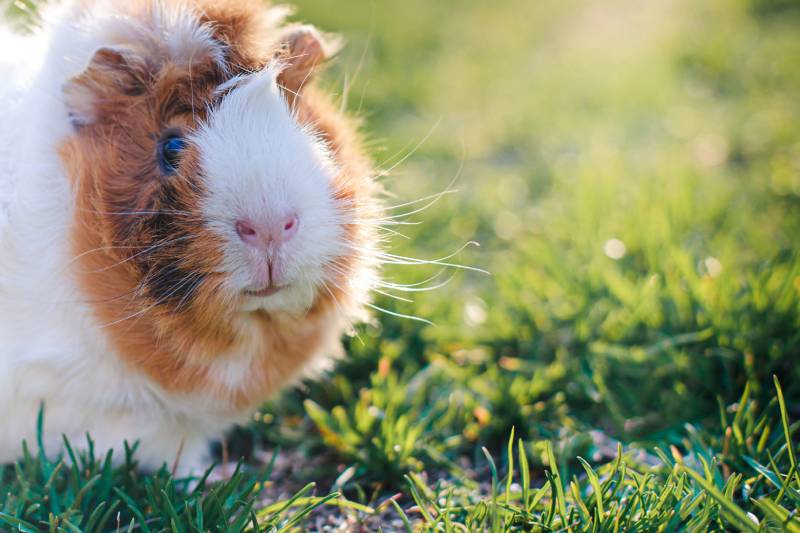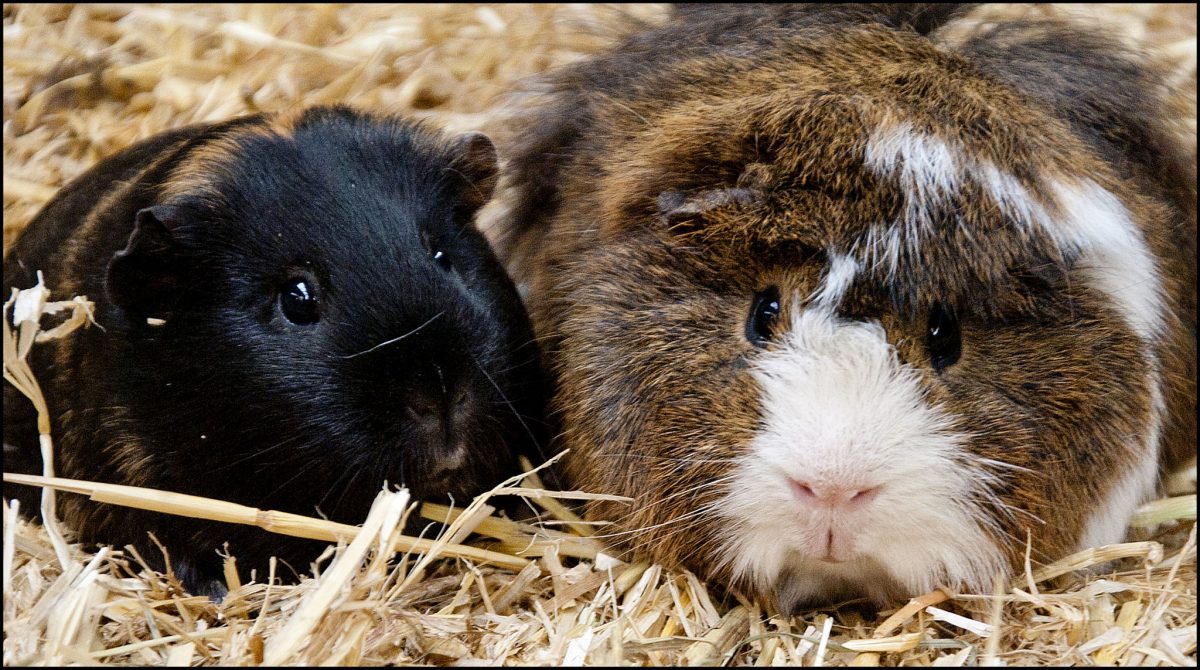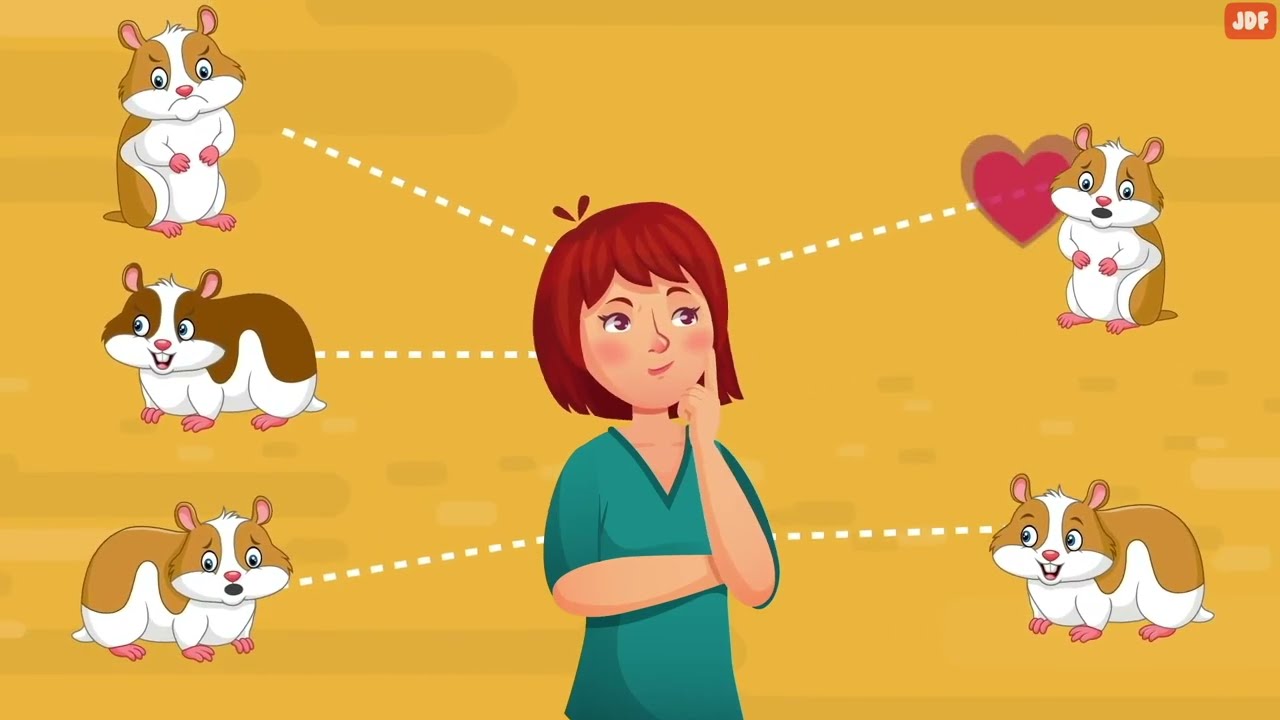Guinea pigs, with their adorable fluffy bodies and playful personalities, have captured the hearts of many as beloved pets. While they may seem like simple creatures, there is much more to them than meets the eye – quite literally. Guinea pigs have a unique visual system that differs significantly from humans, and understanding it can give us a new perspective on these lovable animals. In this article, we will delve into the intricacies of guinea pig vision, exploring its anatomy, capabilities, and how it shapes their behaviors and experiences.
>> READ MORE:
- Can a Bath Kill a Guinea Pig Understanding the Risks
- From Litter Box to Freedom A Guide to Potty Training Your Guinea Pig
- Can Guinea Pigs Eat Oranges? A Comprehensive Guide to Citrus and Cavies
- Can Guinea Pigs Eat Broccoli? A Comprehensive Guide to This Popular Veggie
Contents
Understanding the Unique Visual Capabilities of Guinea Pigs

The first step in understanding guinea pig vision is to take a closer look at their eyes. Unlike humans, guinea pigs lack a central fovea, a small depression in the retina responsible for sharp, detailed vision. Instead, their eyes are designed for peripheral vision, allowing them to see a wide field of view. They also have a larger lens and a higher concentration of photoreceptor cells in their retinas, making them more sensitive to light.
Low Light Sensitivity
One of the most remarkable features of guinea pig vision is their ability to see well in low light conditions. This is due to their high concentration of rod cells in their retinas, which are specialized for detecting light and motion. Guinea pigs are crepuscular animals, meaning they are most active at dawn and dusk when light levels are low. This adaptation allows them to navigate their environment and forage for food during these times.
Limited Color Vision
While humans possess three types of cone cells in their retinas that allow us to see a wide range of colors, guinea pigs only have two types of cones. This means that they have limited color vision, with the ability to see shades of green and blue, but not red or orange. This limitation is due to their evolutionary history as prey animals, where color vision was not as crucial for survival compared to detecting motion and predators.
Depth Perception
Another aspect of guinea pig vision that differs from humans is their depth perception. Guinea pigs have monocular vision, which means each eye works independently, unlike binocular vision in humans. This can affect their ability to judge distances accurately, but they make up for it with their excellent sense of smell and hearing, which they use to navigate their surroundings.
The Challenges of Limited Color Vision in Guinea Pigs

While guinea pigs’ limited color vision may seem like a disadvantage, it has its own unique benefits. Their eyes are more sensitive to green and blue light, allowing them to see in dim lighting conditions. This adaptation also plays a role in how they perceive their environment and interact with their companions.
Impact on Social Interactions
Guinea pigs are social animals, often living in groups in the wild and forming close bonds with each other and their human caregivers. Studies have shown that they use visual cues, such as body language, to communicate with each other. However, their limited color vision can impact their ability to distinguish between different colored objects or convey certain emotions through color changes in their fur. Instead, they rely on body postures, vocalizations, and scents to communicate effectively.
Food Preferences
As herbivores, guinea pigs’ diet primarily consists of greens, fruits, and vegetables. While we may be drawn to food based on its color, guinea pigs’ preferences are likely influenced by their limited color vision. For example, they may prefer leafy greens such as kale and spinach, rich in green hues that stand out to them, over red or orange-colored fruits. This preference may also come from their evolutionary history, where green foliage signaled safety and availability of food.
Environmental Perception
The world around us is full of colors, shapes, and textures that contribute to our perception of the environment. For guinea pigs, their limited color vision and peripheral focus may result in different perceptions of their surroundings. They are more attuned to detecting motion and changes in light, which may impact how they react to stimuli in their environment. This unique way of seeing the world around them gives us a glimpse into their sensory experience and how it influences their behaviors.
How Guinea Pig Eyes Adapt to Their Environment

The visual system of guinea pigs is not only unique in its capabilities but also in how it adapts to different environments. As prey animals, they have evolved to be highly sensitive to potential threats and changes in their surroundings. This adaptation extends to their eyes, allowing them to react quickly and efficiently to signals of danger.
Wide Field of View
Guinea pigs’ eyes are positioned on either side of their head, giving them a wide field of view of approximately 340 degrees. This allows them to see danger coming from almost any direction, increasing their chances of survival in the wild. It also means that they have a blind spot directly in front of them, where their vision overlaps. However, their keen sense of smell and hearing make up for this limitation.
Detecting Motion
One of the essential functions of guinea pig vision is to detect motion. Their high concentration of rod cells in their retinas enables them to see even the slightest movements in their environment. This ability is crucial for their survival as it helps them detect predators or potential sources of food. It also plays a role in how they interact with each other, whether through chasing games or displaying grooming behavior.
Adjusting to Light Levels
As crepuscular animals, guinea pigs are most active during dawn and dusk, when light levels are low. To adapt to this environment, their pupils dilate and constrict to control the amount of light entering their eyes. The lens in their eye also changes shape to focus light onto the retina, enabling them to see in low light conditions. These reflexes are essential for their survival and allow them to function efficiently in their natural habitat.
The Importance of Enrichment for Guinea Pig Vision

Just like humans, guinea pigs thrive when their environment is enriched with mental and physical stimulation. This includes providing them with appropriate toys, hiding spots, and opportunities to explore and play. But did you know that enrichment also plays a crucial role in maintaining healthy vision for your guinea pig?
Preventing Boredom and Depression
Guinea pigs are social animals, and they can become bored or depressed if they do not have enough mental and physical stimulation. This can lead to a variety of health issues, including eye problems such as corneal ulcers and conjunctivitis. Providing them with adequate enrichment, such as toys and tunnels to play in, can keep them entertained and prevent boredom-related issues.
Promoting Natural Behaviors
Enrichment also promotes natural behaviors in guinea pigs, such as foraging and exploring. When they engage in these activities, they use their senses, including vision, to navigate and find food. This keeps their minds active and encourages natural instincts, which can improve their overall well-being and prevent stress-related conditions that may affect their eyesight.
Encouraging Physical Movement
Physical exercise is vital for the health of guinea pigs, as it helps maintain a healthy weight and prevents obesity-related issues. However, exercise also has benefits for their eyes. Regular movement helps improve blood flow, bringing vital nutrients and oxygen to their eyes, which is essential for maintaining good vision. It can also prevent other health issues, such as cataracts, which can develop due to a lack of exercise.
Common Eye Issues in Guinea Pigs and Their Treatment

While guinea pigs have unique visual capabilities, their eyes are susceptible to a variety of health issues that can affect their vision. It is crucial to keep an eye out for any changes in your guinea pig’s eyes and seek medical attention if needed. Below are some common eye problems in guinea pigs and how they are treated.
Conjunctivitis
Conjunctivitis, also known as “pink eye,” is a common condition in guinea pigs where the conjunctiva, the thin membrane that covers the inner surface of the eyelids and white part of the eye, becomes inflamed. This can be caused by bacterial or viral infections, allergies, or irritants such as dust and hay. Treatment may involve antibiotics, eye drops, or anti-inflammatory medications, depending on the cause and severity of the condition.
Corneal Ulcers
Corneal ulcers, also known as corneal abrasions, are small scratches on the surface of the cornea, the transparent outer layer of the eye. These can be caused by trauma, such as getting poked in the eye or from foreign objects, or due to a bacterial or fungal infection. Treatment may involve cleaning the eye, administering antibiotics or antifungal medication, and in severe cases, surgery may be necessary.
Cataracts
Cataracts are a condition where the lens of the eye becomes cloudy, affecting vision. While this condition is more common in older guinea pigs, it can also occur in younger ones due to genetics or underlying health conditions. Treatment may involve surgery to remove the cataract and replace it with an artificial lens, which can significantly improve vision in affected guinea pigs.
Glaucoma
Glaucoma is a condition where there is increased pressure within the eye, leading to damage to the optic nerve and loss of vision. It can be caused by a variety of factors, including genetics, inflammation, or injury to the eye. Treatment involves lowering the eye pressure with medication, and in severe cases, surgery may be necessary.
Conclusion
In conclusion, guinea pigs have a unique visual system that differs significantly from humans. Their eyes are designed for peripheral vision, detecting motion, and perceiving shades of green and blue. This unique way of seeing the world around them has a significant impact on their behaviors, interactions with each other, and their environment. Understanding the complexities of guinea pig vision also highlights the importance of providing them with appropriate enrichment to maintain healthy vision. By keeping an eye out for any changes or issues with their eyes and seeking prompt medical attention, we can ensure that our beloved guinea pigs continue to see the world – although in a slightly different way than we do – for years to come.
